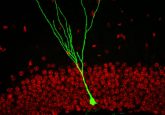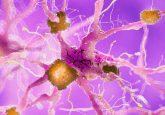Causal gene in hereditary spastic paraplegia identified

A disease-causing gene in hereditary spastic paraplegia bolsters the theory of altered lipid processing as a shared cause in motor neuron diseases.
Genetic and cellular studies, led by Andrew Crosby and Emma Baple of the University of Exeter (UK), have identified a gene that causes the development of hereditary spastic paraplegias (HSPs) when mutated. The findings support previously published thinking that motor neuron degenerative diseases (MNDs) share the common cause of altered lipid processing in brain cells. This theory provides the basis for developing new diagnostic approaches and treatments for MNDs.† Currently there are no single diagnostic tests or treatments available.
MNDs affect the motor neurons that orchestrate voluntary muscle actions including walking, speaking and swallowing. The condition is degenerative, with the neurons accumulating damage over time and can eventually die, leading to weakness and muscle wastage.
HSPs are an inherited group of MNDs that are characterized by lower-limb weakness and spasticity alongside additional neurological symptoms. This group of diseases has remarkable genetic heterogeneity with over 80 known causative genes described.†
The research group from Exeter utilized single nucleotide polymorphism genotyping and whole exome sequencing techniques to investigate the genome of individuals affected by HSP in three families.
Results from the sequencing observed biallelic variants of the gene TMEM63C in each individual and was attributed as the cause of their HSP. TMEM63C encodes the transmembrane protein 63C which is thought to be a calcium ion channel activated by hyperosmotic stress and localized in the cellular regions responsible for lipid processing.
 What do octopus and human brains have in common?
What do octopus and human brains have in common?
The same active transposon was identified in octopus brains as in human brains, which could explain these invertebrates’ impressive intelligence.
Crosby commented: “We’re extremely excited by this new gene finding, as it is consistent with our hypothesis that the correct maintenance of specific lipid processing pathways is crucial for the way brain cells function, and that abnormalities in these pathways are a common linking theme in motor neuron degenerative diseases. It also enables new diagnoses and answers to be readily provided for families affected by some forms of MND.”
To understand the cellular function of transmembrane protein 63C, the Exeter-led team collaborated with Julien Prudent’s lab at the Medical Research Council Mitochondrial Biology Unit, University of Cambridge (UK).
By applying confocal and N-structured illumination microscopies to examine TMEM63C subcellular localization, the Prudent group confirmed the proposal of the Exeter team. TMEM63C was demonstrated to be localized at the mitochondria-endoplasmic reticulum contact sites, notably involved in lipid metabolism homeostasis, proposed as essential for the development of MNDs.
Furthermore, using TMEM63C silencing in HeLa and SH-SY5Y mammalian cell lines, the researchers found that the morphology of both the endoplasmic reticulum and mitochondria was influenced by TMEM63C. These results further attribute TMEM63C protein’s functional role to the lipid processing pathways performed by the organelles.
Baple concluded: “Understanding precisely how lipid processing is altered in motor neuron degenerative diseases is essential to be able to develop more effective diagnostic tools and treatments for a large group of diseases that have a huge impact on people’s lives. Finding this gene is another important step towards these important goals.”





